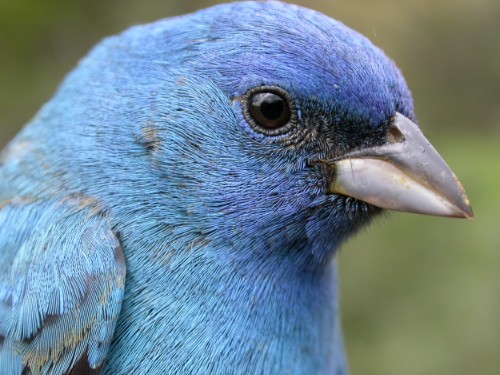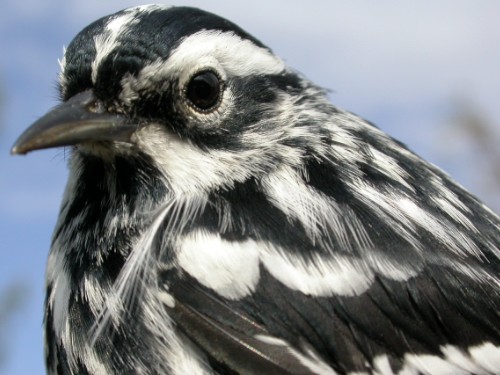|
McGILL BIRD OBSERVATORY |
|||||||||||||||||||||||||||||||||||||||||||||
Welcome to the McGill Bird Observatory weekly report. Click here for a complete listing of our archives. Comments or questions are welcome at mbo@migrationresearch.org.
Banders-in-charge:
Marcel Gahbauer, Lance Laviolette Notes: A week of spectacular colour and diversity! Previously this spring we've banded at most 18 species per week; over the past seven days we've more than doubled that with 39 different species banded, and even had two individual days with over 20! Monday was our best day, with 57 birds of 22 species banded, and 60 species observed, all season highs. New birds for the year included Indigo Bunting, Blackpoll Warbler, Magnolia Warbler, and Chestnut-sided Warbler - all caught in the nets before being otherwise observed! Tuesday was much quieter, but we still had a decent number of birds on hand for Richard Dagenais of Global Television, who came out to film a series of short interviews for Global Morning. A Tree Swallow and a Brown Thrasher posed particularly cooperatively for the camera. Wednesday the numbers built up again, with several further additions to the banding list: Tennessee Warbler, Northern Waterthrush, American Redstart, and Eastern Kingbird. For the second day in a row we had a Ruby-throated Hummingbird fly into net A1; we don't band them, but are recording age and sex, to share with hummingbird banders in Ontario. Though the weekend was largely wet, a good morning of banding was still squeezed in on Saturday before the rain became steady. Again several new species were banded - White-breasted Nuthatch (at last!), Blackburnian Warbler, Black-throated Blue Warbler, Wilson's Warbler, and Red-eyed Vireo. In total for the week, we added 22 species to the list of birds observed this spring, and 16 to the list of species banded, including 13 which we had never banded at MBO previously. While we don't expect many additional species to arrive over the next week or two, we do anticipate that many individual migrants will yet be passing through. Meanwhile, some species have already been nesting for a while. Both of our resident pairs of Canada Geese were promenading small goslings around in recent days, while a check of the nest boxes revealed that two pairs of Tree Swallows and one pair of House Sparrows are incubating eggs. Also known to already be nesting in the area are American Robin, Rose-breasted Grosbeak, Red-winged Blackbird, Eastern Phoebe, Mourning Dove, Brown Thrasher, and Common Grackle.
|


